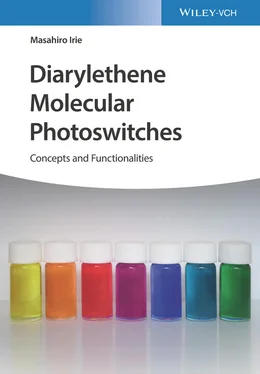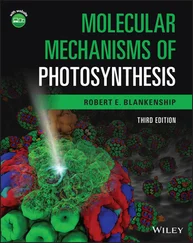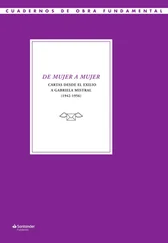1 Cover
2 Table of Contents
3 Begin Reading
1 iii
2 iv
3 ix
4 x
5 1
6 2
7 3
8 4
9 5
10 6
11 7
12 8
13 9
14 10
15 11
16 12
17 13
18 15
19 16
20 17
21 18
22 19
23 20
24 21
25 22
26 23
27 24
28 25
29 26
30 27
31 28
32 29
33 30
34 31
35 32
36 33
37 34
38 35
39 36
40 37
41 38
42 39
43 40
44 41
45 42
46 43
47 44
48 45
49 46
50 47
51 48
52 49
53 50
54 51
55 52
56 53
57 54
58 55
59 56
60 57
61 58
62 59
63 60
64 61
65 62
66 63
67 64
68 65
69 66
70 67
71 68
72 69
73 70
74 71
75 72
76 73
77 74
78 75
79 76
80 77
81 78
82 79
83 80
84 81
85 82
86 83
87 84
88 85
89 86
90 87
91 88
92 89
93 90
94 91
95 92
96 93
97 94
98 95
99 96
100 97
101 98
102 99
103 100
104 101
105 102
106 103
107 104
108 105
109 106
110 107
111 108
112 109
113 110
114 111
115 112
116 113
117 114
118 115
119 116
120 117
121 118
122 119
123 120
124 121
125 122
126 123
127 124
128 125
129 126
130 127
131 128
132 129
133 130
134 131
135 132
136 133
137 134
138 135
139 137
140 138
141 139
142 140
143 141
144 142
145 143
146 144
147 145
148 146
149 147
150 149
151 150
152 151
153 152
154 153
155 154
156 155
157 156
158 157
159 158
160 159
161 160
162 161
163 162
164 163
165 164
166 165
167 166
168 167
169 168
170 169
171 170
172 171
173 172
174 173
175 174
176 175
177 176
178 177
179 178
180 179
181 180
182 181
183 182
184 183
185 184
186 185
187 186
188 187
189 188
190 189
191 190
192 191
193 192
194 193
195 194
196 195
197 196
198 197
199 198
200 199
201 200
202 201
203 202
204 203
205 204
206 205
207 206
208 207
209 208
210 209
211 210
212 211
213 212
214 213
215 214
216 215
217 216
218 217
219 218
220 219
221 220
222 221
223 222
224 223
225 224
226 225
227 226
228 227
Diarylethene Molecular Photoswitches
Concepts and Functionalities
Masahiro Irie

Author
Masahiro Irie
Professor emeritus Kyushu University Japan
All books published by Wiley‐VCHare carefully produced. Nevertheless, authors, editors, and publisher do not warrant the information contained in these books, including this book, to be free of errors. Readers are advised to keep in mind that statements, data, illustrations, procedural details or other items may inadvertently be inaccurate.
Library of Congress Card No.:applied for
British Library Cataloguing‐in‐Publication DataA catalogue record for this book is available from the British Library.
Bibliographic information published by the Deutsche NationalbibliothekThe Deutsche Nationalbibliothek lists this publication in the Deutsche Nationalbibliografie; detailed bibliographic data are available on the Internet at < http://dnb.d-nb.de>.
© 2021 WILEY‐VCH GmbH, Boschstr. 12, 69469 Weinheim, Germany
All rights reserved (including those of translation into other languages). No part of this book may be reproduced in any form – by photoprinting, microfilm, or any other means – nor transmitted or translated into a machine language without written permission from the publishers. Registered names, trademarks, etc. used in this book, even when not specifically marked as such, are not to be considered unprotected by law.
Print ISBN:978‐3‐527‐34640‐0 ePDF ISBN:978‐3‐527‐34642‐4 ePub ISBN:978‐3‐527‐82286‐7 oBook ISBN:978‐3‐527‐82285‐0
LC record available at https://lccn.loc.gov/2020033403
LC ebook record available at https://lccn.loc.gov/2020033404
Molecules capable of reversible photoswitching between two isomers having different absorption spectra are called photochromic molecules or molecular photoswitches. The two isomers differ from each other not only in their absorption and fluorescence spectra, but also in their refractive indices, dielectric constants, oxidation/reduction potentials, and geometrical structures. These photoswitchable bistable molecules are applied to construct photonic devices, such as erasable optical memory media and optical switch elements. Although the first finding of photoswitchable molecules can be traced back to the middle of nineteenth century, they are still awaiting their time to go on the stage of photonics devices in wide use.
Digital cameras take photos by using physical phenomena of inorganic materials. Photodiodes, such as CCD (charge‐coupled device) and CMOS (complementary metal oxide semiconductor), detect photons based on photovoltaic effects and construct photo‐images. Animals and plants have no such inorganic semiconductors. In biological systems, molecular photoswitches are extensively employed in photoreceptors. Vision, for example, uses the cis ‐to‐ trans photoisomerization of retinal to control the conformation of rhodopsin and initiate the transduction cascade to generate neural signals, while phototaxis of Chlamydomonas is activated by the trans ‐to‐ cis photoisomerization of retinal in the channel rhodopsin. In plants, the photoisomerization of phytochromes plays a key role in controlling their biological activity. These ingenious uses of organic molecules for the detection of photons in biological systems indicate that molecular photoswitches have the potential to be applied in the construction of various types of photon‐working reagents and devices.
A characteristic feature of molecules is their small size (∼ 1 nm). If a single molecule would work as one‐bit memory, ultimate high‐density (1 P bit/inch 2) optical memory could be realized. Conductance switches are key components of almost all electronic devices. Fabrication of single‐molecule photoswitches is the first step toward molecular electronics. Photoswitching of single‐molecule fluorescence has revolutionized fluorescence microscopy imaging. The super‐resolution technique realizes a resolution of a few tens of nanometers. For such applications, molecular photoswitches are required to possess superior properties, such as thermal stability of both isomers, fatigue resistance, high sensitivity, rapid response, and reactivity in the solid state. Among them, thermal stability and fatigue resistance are indispensable properties. Although tremendous efforts were made in the 1970–1980s to provide the thermal irreversibility to molecular photoswitches in order to apply them to optical memory media, all attempts to modify existing photoswitchable molecules failed, because there was no guiding principle on how to prepare such thermally stable molecular photoswitches.
Читать дальше













